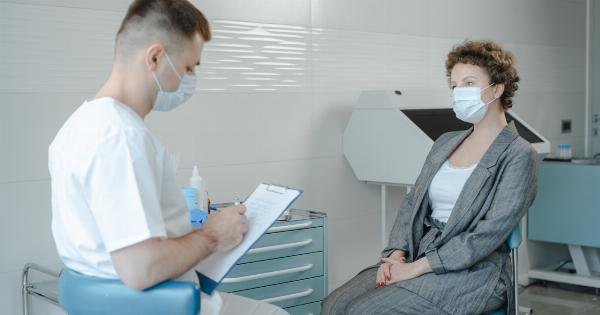In today’s modern world, medical imaging has become an indispensable tool for diagnosing and monitoring various health conditions.
One of the most commonly used imaging techniques is X-ray, which uses ionizing radiation to create images of the internal structures of the body. While X-rays are highly effective in helping doctors make accurate diagnoses, concerns have been raised about the potential link between X-ray exposure and the development of cancer.
The basics of X-ray imaging
Before delving into the connection between X-ray exposure and cancer, let’s first understand how X-ray imaging works. X-rays are a form of electromagnetic radiation that has a higher energy than visible light.
When X-rays pass through the body, they are absorbed by different tissues to varying degrees. Dense tissues, such as bones, absorb more X-rays and appear white on the resulting image, while less dense tissues, such as organs, allow more X-rays to pass through and appear darker.
X-ray imaging is a valuable tool for diagnosing a wide range of health conditions, including bone fractures, pneumonia, dental issues, and even certain types of cancer.
It helps doctors visualize internal structures and identify abnormalities that may not be visible through other imaging techniques.
The potential risks of X-ray exposure
While X-rays have revolutionized medical diagnostics, they are not without potential risks. The primary concern with X-ray exposure is the ionizing radiation that it emits.
Ionizing radiation has enough energy to remove tightly bound electrons from atoms, leading to potential damage to DNA and other cellular structures. This damage, if not properly repaired, can result in mutations and ultimately lead to the development of cancer.
It is important to note that X-ray imaging uses low doses of radiation that are considered safe for most individuals. The benefits of accurate diagnosis and treatment far outweigh the potential risks associated with X-ray exposure.
However, repeated or excessive exposure to X-rays can increase the cumulative dose of radiation and potentially elevate the risk of developing cancer.
Understanding the dose of X-ray radiation
When evaluating the potential risks of X-ray exposure, it is essential to consider the radiation dose received during imaging procedures.
The absorbed dose, measured in units of grays (Gy), quantifies the amount of radiation energy absorbed per unit of tissue. However, in the case of X-rays, a different unit called millisieverts (mSv) is typically used, which takes into account the biological effects of radiation.
The effective dose, measured in millisieverts, considers the absorbed dose and the sensitivity of different organs to radiation. It provides an estimate of the overall risk associated with X-ray exposure.
For example, a dental X-ray may result in an effective dose of about 0.005 mSv, while a chest X-ray may expose an individual to an effective dose of approximately 0.1 mSv.
The link between X-ray exposure and cancer
Several studies have investigated the potential connection between X-ray exposure and cancer, particularly in individuals who have received high doses of radiation, such as cancer patients undergoing radiation therapy or individuals exposed to occupational radiation. These studies have shown an increased risk of developing cancer, including leukemia, breast cancer, lung cancer, and thyroid cancer, among others.
It is important to note that the risks associated with X-ray exposure at moderate doses, typically encountered during diagnostic procedures, are much lower than those associated with high-dose exposures.
The potential risk of developing cancer from diagnostic X-rays is considered to be minimal, especially when compared to the potential benefits of accurate diagnosis and treatment.
Minimizing the risks
To ensure patient safety and minimize the risks associated with X-ray exposure, radiation protection measures are routinely implemented in medical facilities.
These measures include the use of lead aprons or shields to protect sensitive areas of the body from unnecessary radiation, collimation to only expose the required area, and the use of dose monitoring devices to keep track of the radiation dose received by patients.
In addition, medical professionals follow the principle of “ALARA” (As Low As Reasonably Achievable) when performing X-ray imaging.
This principle emphasizes the importance of using the lowest possible radiation dose that can still provide the necessary diagnostic information.
Conclusion
X-ray imaging has revolutionized medical diagnostics and greatly improved patient care by enabling accurate and timely diagnoses.
While X-ray exposure does involve a small amount of radiation, the potential risks of developing cancer from diagnostic X-rays are minimal. The benefits of accurate diagnosis and appropriate medical interventions far outweigh the risks associated with X-ray exposure.
However, it is always important for healthcare providers to follow strict radiation protection guidelines and use the lowest possible radiation dose when performing X-ray procedures.




























